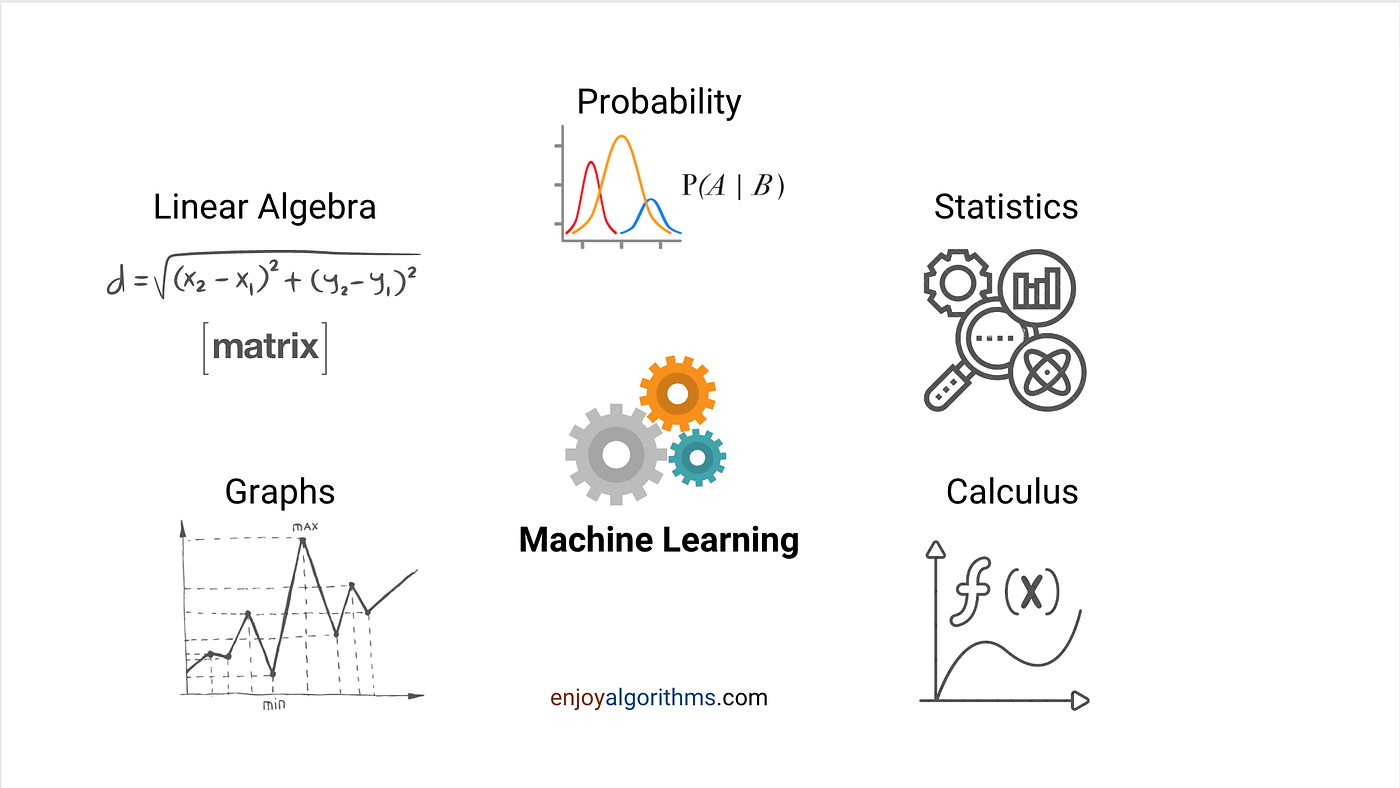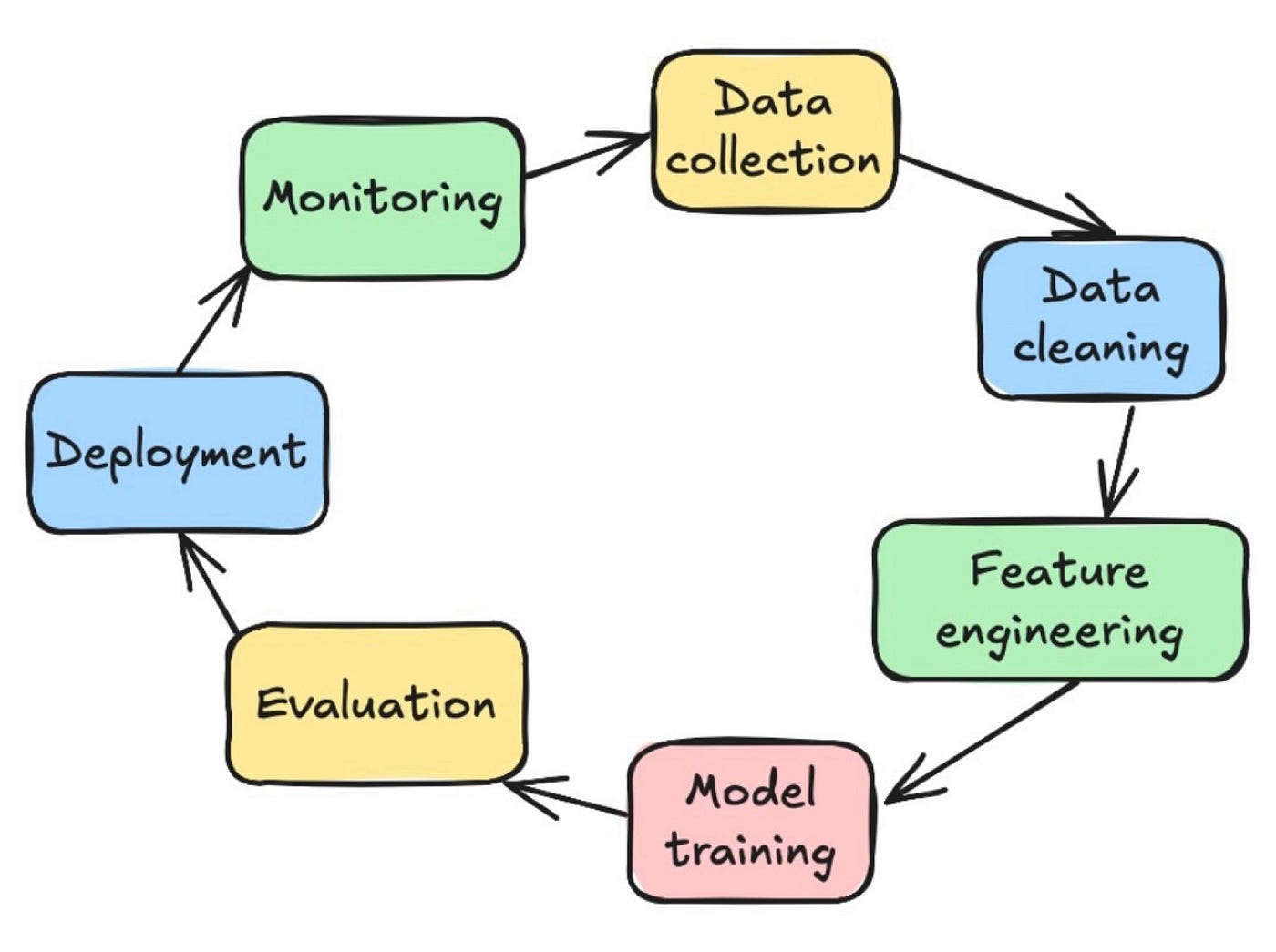Hands on Machine Learning — A Beginner's Guide (2025–2026)
 Rishee Panchal
Rishee Panchal
Introduction
Before we dive into learning Machine Learning (ML), let’s answer a fundamental question: What exactly is ML, and why should you learn it in 2025?
At its core, Machine Learning is a subset of Artificial Intelligence that allows systems to learn patterns from data and make decisions or predictions without being explicitly programmed. It’s the science behind many of the tools you interact with every day, from Google Search and Netflix recommendations to virtual assistants and fraud detection systems.
Definition:
"Machine Learning is the field of study that gives computers the ability to learn without being explicitly programmed." — Arthur Samuel, 1959
Fast forward to 2025, and ML is no longer just a niche academic discipline. It’s a core component of modern technology, and understanding it gives you immense leverage in almost any technical or business career.
Why learn Machine Learning in 2025?
1. It Powers the Digital World
From Instagram filters to voice assistants, ML is integrated into apps and devices we use daily. Understanding ML means understanding the building blocks of today’s smart tech.
2. High Demand, High Pay
ML skills are among the most in-demand in the tech industry. Companies seek ML engineers, data scientists, AI researchers, MLOps engineers, and prompt engineers. According to recent reports, average salaries for ML engineers in 2025 range between $120,000–$180,000 USD/year globally.
3. It’s the Foundation of Generative AI
Well.. you cannot just dive into the field of GenAI without knowing ML fundamentals. ChatGPT, MidJourney, Gemini, Claude, etc these GenAI tools are built on ML foundations like transformers and large language models (LLMs). If you want to build, understand, or use these tools better, ML knowledge is essential.
4. Critical for Innovation
ML is revolutionizing industries:
Healthcare: Disease prediction, medical image analysis
Finance: Fraud detection, algorithmic trading
Retail: Personalization, inventory forecasting
Agriculture: Yield prediction, crop disease diagnosis
5. It Teaches You to Think Differently
ML teaches you how to model problems, test hypotheses, and reason with uncertainty. This skillset is valuable far beyond tech roles.
Setting Expectations
Machine learning is not magic. It won’t make you rich overnight or allow you to build LLM’s like ChatGPT in a month.
But with consistency, curiosity, and discipline, anyone can learn it. You don’t need a computer science degree or advanced math. Start with the basics and build up from there.
STEP 1: The Prerequisites
Math
You don’t need to master calculus or advanced probability initially. Focus on:
Statistics & Probability: Mean, variance, distributions, Bayes theorem
Linear Algebra: Vectors, matrices, matrix multiplication
Basic Calculus: Just enough to understand optimization
However, the question is, where can one find these? Don't worry, YouTube and other platforms have all the information you need.
Here is one such playlist that you can follow from Weights & Biases.

Programming
Python is the default ML language. Learn it well. Know:
Data types and control flow
Functions and OOP
Libraries like
NumPy,Pandas,Matplotlib

Free resources to start:
STEP 2: The ML learning cycle
1. Understand the Data
Data Collection
Data Cleaning
Exploratory Data Analysis (EDA)
2. Learn Algorithms
Start with:
Supervised Learning:
Regression: Linear Regression, Polynomial Regression
Classification: Logistic Regression, Decision Trees, k-NN
Unsupervised Learning:
Clustering: K-means, DBSCAN
Dimensionality Reduction: PCA
Later, explore:
Neural Networks & Deep Learning
Reinforcement Learning
3. Practice on Projects
Titanic Survival Prediction
House Price Prediction
Digit Recognition using MNIST
Spam Classifier
4. Model Evaluation & Tuning
Understand:
Accuracy, Precision, Recall, F1 Score
Confusion Matrix
Cross-validation
Hyperparameter tuning (Grid Search, Random Search)

STEP 3: Building real Projects
Once you understand the basics, start building.
"Learning ML without projects is like learning cooking without ever entering the kitchen."
Where to Find Datasets:
Project Ideas (2025-Ready) (Beginner)
Fake news detection
Prompt classifier (good vs bad prompts)
World cup predictor
STEP 4: Avoid common mistakes
Skipping the math and theory: It catches up later.
Watching tutorials passively: Remember, Watching videos ≠ Learning. Code along, tweak, experiment.
Learning too many tools: Focus on the core concepts first.
Comparing with experts: Everyone learns at their own pace.
STEP 5: Learn Continuously
ML evolves rapidly. Stay updated:
Read
DeepLearning.AI The Batch newsletter
Medium blogs
Arxiv-sanity by Andrej Karpathy
Watch
StatQuest (for theory)
AssemblyAI (for NLP and GenAI)
Sebastian Raschka (ML coding and deep learning)
Krish Naik (concepts in depth)
Follow
Kaggle Grandmasters
ML engineers on LinkedIn and Twitter/X
GitHub trending ML repos
BONUS: Where to learn in 2025
Courses
Books
Hands-On ML with Scikit-Learn, Keras, and TensorFlow (Géron)
Deep Learning with Python (Chollet)
Tools to Know
Scikit-learn
TensorFlow / PyTorch
Hugging Face
Jupyter Notebook / Colab
Final thoughts
Machine Learning is not just a tech skill, it's a thinking framework. Whether you aim to become a data scientist, AI researcher, product manager, or just a curious developer, understanding ML helps you solve real-world problems with data.
You won't become an expert in a month, and that's fine. Be consistent. Build projects. Stay curious.
Your turn
If this guide helped you, consider clapping, sharing, or commenting with your own journey or questions. Let’s build the ML future together.
Happy learning!
Subscribe to my newsletter
Read articles from Rishee Panchal directly inside your inbox. Subscribe to the newsletter, and don't miss out.
Written by

Rishee Panchal
Rishee Panchal
I’m a computer science student exploring AI and machine learning through hands-on projects and critical thinking. My work spans from experimenting with LLMs and transformers to building practical AI tools. I believe in learning by doing, questioning assumptions, and sharing insights along the way.